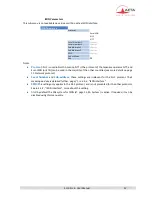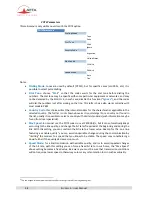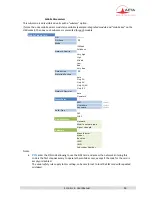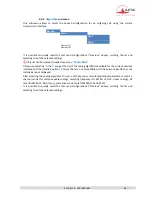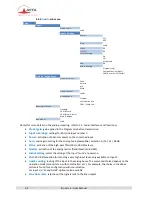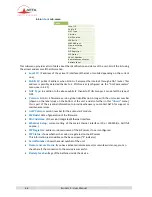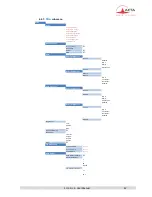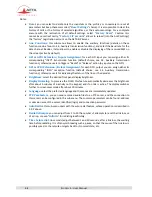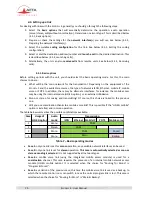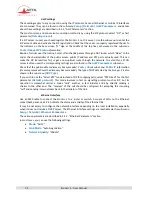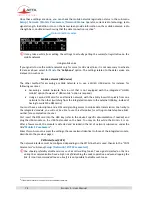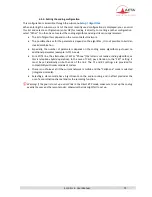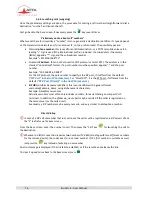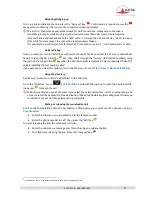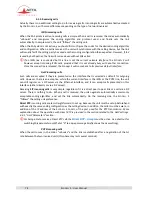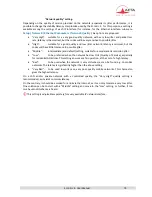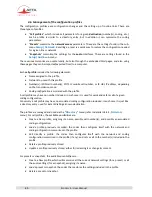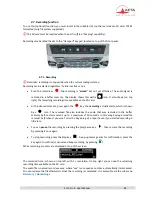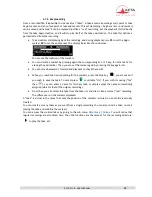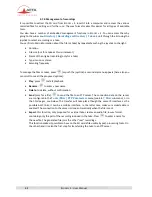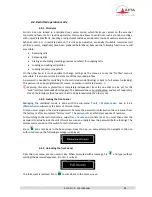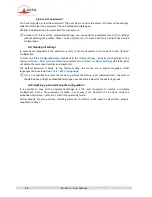
S
COOPY
+ S - User Manual
71
4.5.2.
Preparing the network interface(s)
This part describes how to prepare the network interfaces for the subsequent connections, in order to
be ready to handle calls. This should also be done to get the unit ready to possibly receive calls from a
remote device. Each interface potentially involved in links must be prepared.
ISDN interface
Use an RJ45 cable to connect the ISDN line to the ISDN socket on the back of the unit (see 3.2.2, ISDN
socket ⑦).
The network interface must be configured depending on the local ISDN line that is used, thanks to the
"ISDN Parameter" sub-menu (
Setup
/
Network
/
ISDN Parameters
).
The default settings, suitable for most public ISDN lines, are the following:
5AS:
on
Protocol: Euro ISDN
Local numbers and sub-addresses: leave blank
SPID:
only relevant for North America
Protocol
The default setting is "Euro ISDN", also known as ETSI protocol. Change this setting if another protocol is
needed in your location.
Local address
In some cases, it may be necessary to set the local address (or local ISDN number) of the line, and/or it is
possible to assign a sub-address to the codec.
The local number allows "multiple subscriber numbering" or MSN. This number is usually the number
remote equipment must dial to call your equipment. Configuring this number in the equipment is not
mandatory if the equipment is directly connected to the public network. On the other hand, if the
equipment is connected to a PABX, the number(s) are often required. The PABX may also impose a
unique number for each B channel within the same BRI interface. In such a case, refer to the
characteristics and configuration of the PABX.
Proper configuration of the local numbers is essential, and many problems in setting up links
originate from mistakes or misunderstandings regarding this configuration. In doubt, leave this
number blank! This is usually appropriate for public lines.
Sub-address SA
This number differentiates several terminals connected to the same ISDN bus, which are allocated the
same call number(s). Thus it can be useful in case other devices are connected with the S
COOPY
+ S on the
same line.
Whenever a sub-address is set, the unit will only accept incoming calls specifically directed to this sub-
address.
Most often, the best setting is to leave this blank.
SPID
This "Service Profile Identifier" is only relevant for the NI-1 protocol (used by some operators in North
America). This number identifies the services of the ISDN line, and usually includes the subscriber
number or part of it. This number is mandatory to operate the line, and must be provided by the
network operator.

